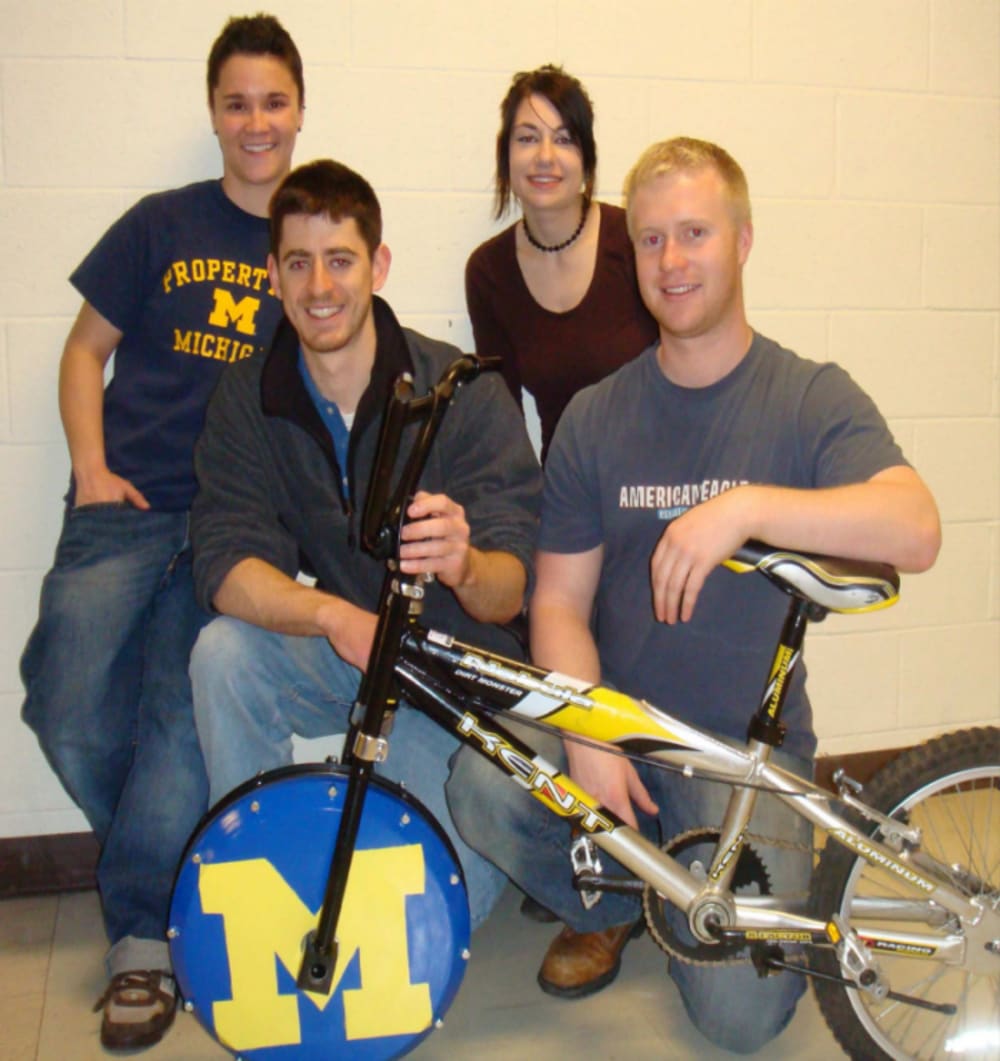
Imagine riding your bicycle down the sidewalk at 20mph. Just as you approach a driveway entrance to a store, a car turns from the street into the driveway, cutting you off. You brake safely to a stop, and because of your new Regenerative Braking front wheel, you can press a button and bring your bike up to over 15mph without any pedaling or external energy !
This invention is real and you can ride a prototype today ! It uses state-of-the art hydraulics to store braking energy for later release. The goal is to ultimately make it a retrofit front-wheel for any bicycle using hydraulic pump motors that exist today and are over 94% efficient. It can store hill energy too. You can check out an actual demo video at:
http://www.FlyingBlueHorse.com
Other applications include providing 2-wheel drive for mountain biking, range extension for wheelchairs, extra torque and acceleration for small utility vehicles, delivery and other city stop-and-go vehicles.
These braking demands call for a deceleration in the range of 3-4m/s2. As a general note, "Tip-over" deceleration for a bicycle is typically over 4.5m/s2. To achieve this intensity of braking for a bicycle at 20mph requires over 4 horsepower of energy absorption ability. If we were to try to perform regenerative braking with an electric motor, 4 horsepower is a huge electric motor for a bicycle. A smaller electric motor may be able to perform this amount of energy absorption for short durations, however at much less than the 94% absorption efficiency that we see with our hydraulic pumps.
For energy storage, the hydraulic accumulator is much better than the battery. The state-of-the-art hydraulic accumulators are over 97% efficient. Small 20amp-hour batteries used for electric bicycles are not (and may not be) built to absorb this amount of energy efficiently. A 20-amp-hour battery is typically less than 65% efficient at these energy-absorption rates. So it seems that hydraulics for moderate-to-heavy city-type braking and acceleration is the most efficient solution.
We calculate that using today's available off-the-shelf hydraulics, the 20' bike wheel should add less than 12 pounds to the weight of the bike. Because acceleration is such a large part of the burden of riding a bicycle, the hydraulic wheel will more-than makeup for its weight.
As a side note, The pressures and hydraulic parts used in our system have been used safely in mobile systems for many years. The hydraulics in the center of the wheel do not spin. We have not encountered any instability issues.
We believe this invention will increase the marketability and usefulness of bicycles. We have estimated that this retrofit front-wheel for any bicycle is likely to cost $175 in a retail market.
For comparison and cost-effectiveness, an electric bike retrofit is about the same weight & cost, however it needs to be plugged in at night and the batteries will need to be replaced/recycled after 800 charges. We have one of our original systems that still works today after 5 years of demos !
-
Awards
-
 2010 Transportation
Category Winner
2010 Transportation
Category Winner
Like this entry?
-
About the Entrant
- Name:David Swain
- Type of entry:teamTeam members:David M. Swain
Frank Maurer
Jason Moore
Albert Shih - Hardware used for this entry:Parker HydraulicsSoftware used for this entry:SolidWorks
- Patent status:pending
















